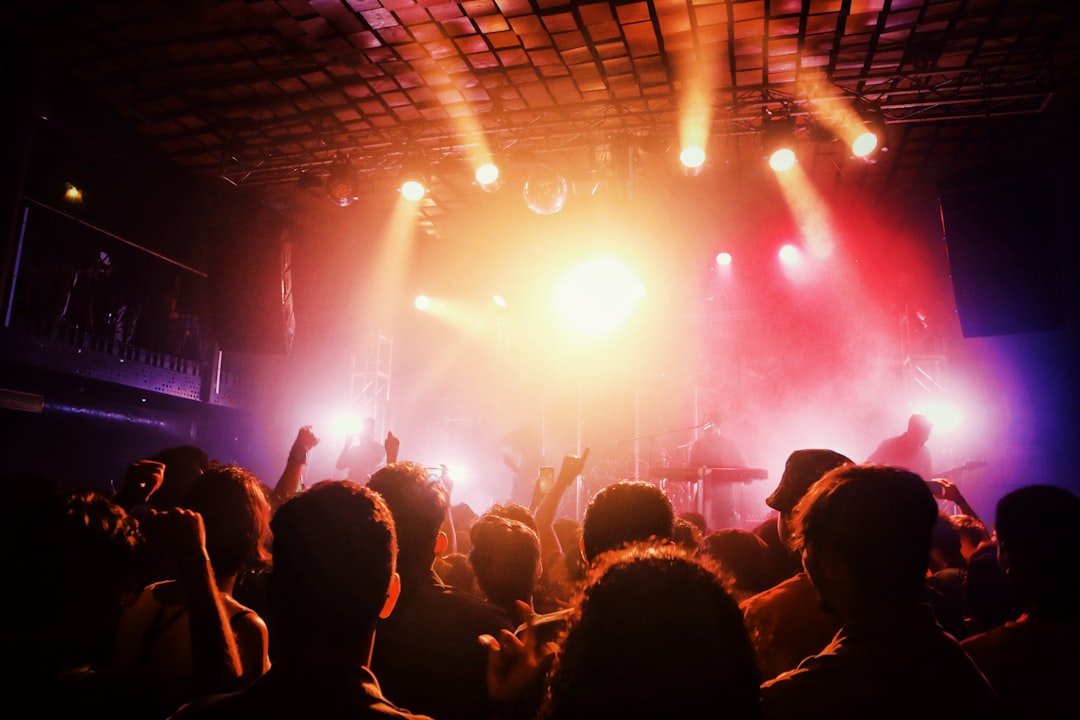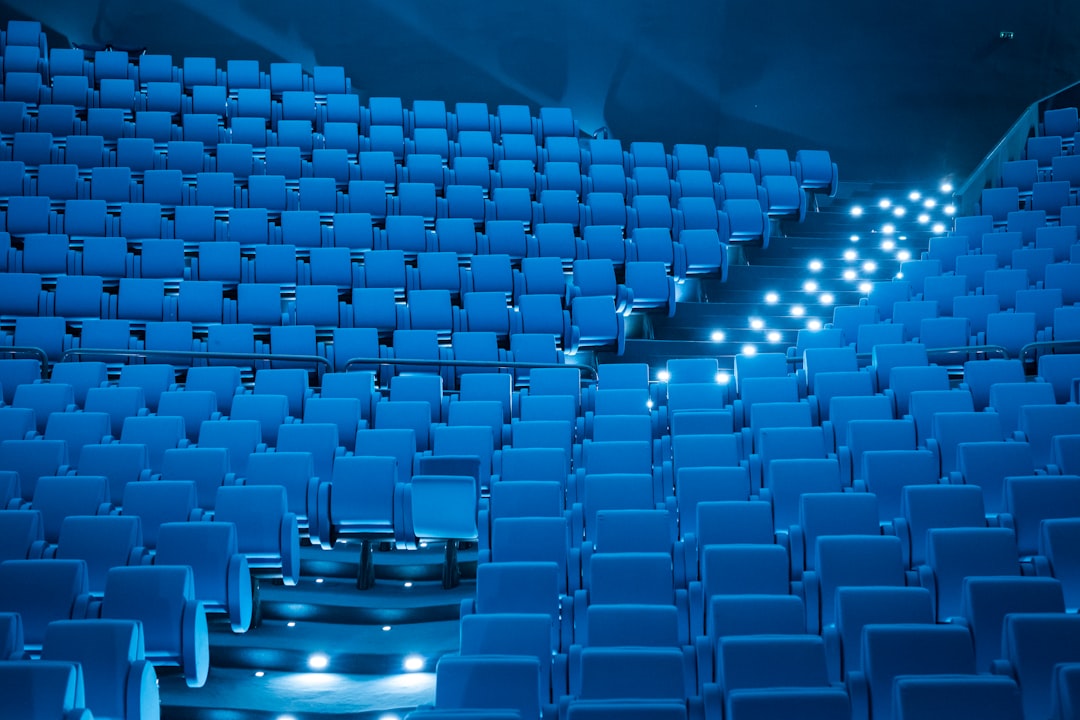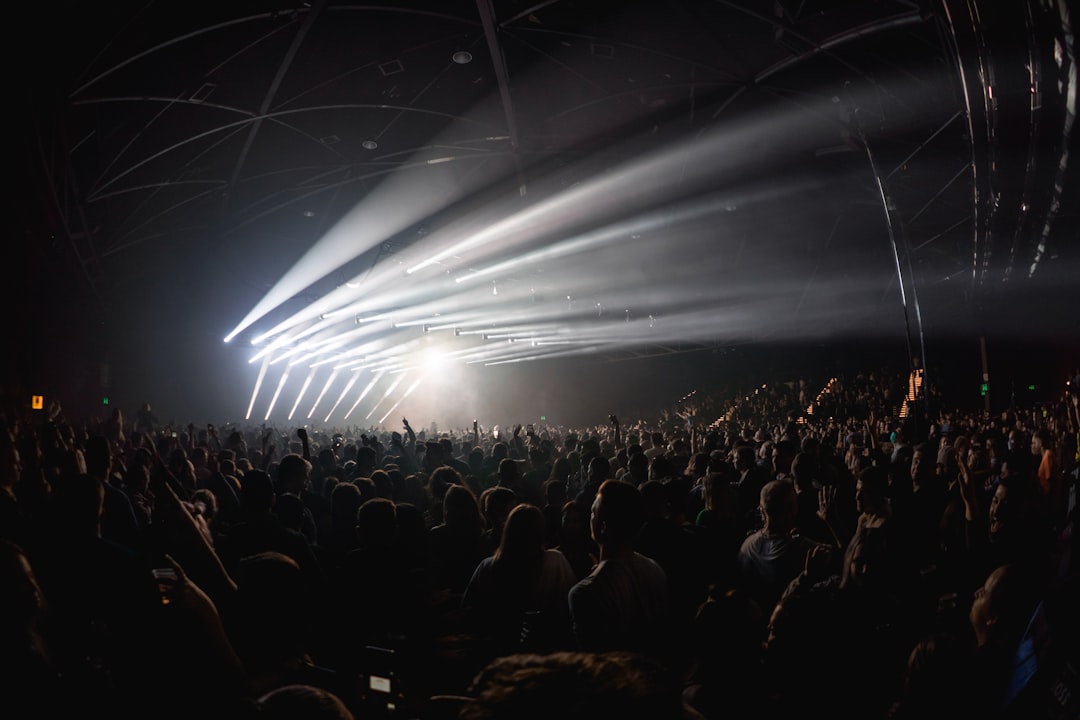

Engage prospects with a scan and streamline customer engagement with FREE QR code marketing tools by Sona – no strings attached!
Create a Free QR CodeFree consultation

No commitment

Engage prospects with a scan and streamline customer engagement with FREE QR code marketing tools by Sona – no strings attached!
Create a Free QR CodeFree consultation

No commitment
In today's digitally driven world, QR codes are a strategic powerhouse for entertainment venues aiming to bridge the divide between offline experiences and online engagement. For event managers and marketing leaders, leveraging QR codes provides a frictionless, interactive way to drive audience participation, increase digital touchpoints, and collect actionable data, all without requiring visitors to download an app or navigate complex processes. Scans turn into sign-ups, purchases, and feedback in seconds, streamlining experiences while producing measurable signals for smarter decisions.
Entertainment venues face ongoing challenges in maintaining high engagement, personalizing outreach, and measuring impact across physical and digital channels. Traditional printed materials, paper-based forms, and analog sign-up sheets often fall short in delivering measurable outcomes or seamless customer journeys. A common shortfall is missing high-value prospects who never formally sign up, leaving marketers blind to potential leads and unable to nurture genuine interest. QR codes remove this friction by bringing the next best action right to the guest’s phone, lowering barriers to participation and capturing the data that older methods miss.
By integrating QR codes, entertainment venues can simplify access to information, facilitate real-time interactions, and enable new revenue streams while capturing valuable behavioral insights to refine marketing strategy and event management. Used effectively, QR campaigns make it possible to identify and engage even those visitors who remain anonymous in standard CRMs, providing a new layer of transparency that can inform follow-up, retargeting, and audience segmentation. The result is a connected experience: from posters to seatbacks to concession stands, every surface can become a digital entry point that advances the customer journey and quantifies impact.

Entertainment venues often struggle to convert passive attendees into active participants, especially when analog sign-up methods go ignored or fail to capture essential data. QR codes offer a flexible solution for connecting venue goers with digital content or registration experiences in real time. With a single scan, guests can check in via QR code ticketing, vote for the next song, order a drink, or unlock VIP perks, turning fleeting attention into measurable action.
The key is intentional design and deployment. Replace slow or manual processes with scan-to-action experiences that meet people where they are, then measure performance to double down on what works. Set clear objectives such as more check-ins, faster line throughput, or higher social participation, and tie each QR placement to a desired outcome.
Platforms built for event-focused organizations support these steps with centralized QR management, dynamic content switching, and in-depth reporting. With tools like Sona QR, teams can pivot from inefficient workflows to measurable engagement and surface opportunities that were previously lost to anonymity.

Entertainment venues rely on high visitor throughput and memorable experiences, but too often, a lack of visibility into guest behavior hampers both. QR codes connect physical prompts such as tickets, seatbacks, posters, and bar menus to instant digital actions. This closes the offline-to-online gap and gives marketers a modern way to capture intent, even if no form is submitted on a website afterward.
Speed and simplicity are essential during live events. Guests do not want to download an app just to view a schedule, rate a performer, or redeem a discount. A QR code lets them take action on the spot, increasing participation and reducing drop-off. Combine this with dynamic QR capabilities so that if a schedule changes or a sponsor adds a surprise offer, you can update the destination instantly without reprinting anything.
Applied strategically across promotional materials, onsite signage, and staff lanyards, QR codes transform the venue into a measured journey, ensuring messages are personalized, timely, and consistent. For ideas tailored to this sector, see Sona QR’s entertainment strategies and this perspective on entertainment marketing.

Entertainment venues benefit from multiple QR formats that match distinct moments in the guest journey. The right format paired with the right destination turns curiosity into action and action into data.
For most venues, dynamic QR codes are ideal. They allow destinations to be updated without reprinting and unlock detailed analytics that static codes cannot provide. Static codes still have their place for evergreen content such as restroom wayfinding or general venue policies, but dynamic options are best for campaigns, time-sensitive offers, and segmented follow-ups.
With a platform like Sona QR, venues can generate and manage all formats in one place, apply branding, and monitor performance across locations and campaigns.

Many venues miss upsell or feedback opportunities simply because engagement happens in untracked spaces. To maximize participation, place QR codes where visitors naturally make decisions or pause, then connect each location to a relevant action.
Study attendee flow from arrival to exit. Identify friction points like lines at the bar or confusion about set times, and turn those moments into scan-to-solve experiences. When a placement aligns with intent, scan rates rise and downstream conversions improve.
For a broader overview of placement tactics, explore QR use in event management.
QR codes support a wide spectrum of use cases that move guests from interest to action while capturing data along the way. The best scenarios are those where scanning is faster and more rewarding than any alternative.
Consider how each touchpoint contributes to your goals: quicker entry, higher spend per head, richer feedback, or more repeat visits. Align the scan destination with a clear next step and a measurable outcome.
These scenarios show how QR codes minimize untracked traffic, turn curiosity into outcomes, and transform momentary interactions into lasting value.
Every scan is a signal of intent and a source of first-party data. Venues often lose the chance to nurture high-fit prospects because the visitor never fills a form or opts into email the traditional way. With QR-driven journeys, you can build audiences based on what people scanned, where, and when, then tailor follow-up accordingly.
Segmentation begins with mapping your journey stages. Assign QR codes to awareness, engagement, and conversion moments. As guests scan across touchpoints, your platform tags their interests, which feeds personalized email, SMS, and ad campaigns. For deeper tactics, see Sona’s playbook on intent retargeting.
With Sona QR, each code becomes a smart entry point into your funnel, capturing behavioral context that powers precise retargeting instead of guesswork.
Disconnected campaigns often lead to fragmented experiences and lost data. QR codes act as connectors across offline and digital channels, enabling real-time engagement and closing attribution gaps. When every printed piece or screen becomes a two-way interface, you can unify messaging and measure performance across the entire visitor journey.
Entertainment venues rely on diverse media: posters, emails, social posts, programs, in-venue screens, and sponsor assets. Standardize how QR codes appear and what they deliver across these media so the experience is consistent and the data is usable.
QR codes serve as the offline onramp to your digital marketing engine. With a centralized platform like Sona QR, you can manage all your codes, monitor performance, and sync scan data with your CRM and ad platforms to create a connected, measurable funnel.
Identify what you want to achieve and where engagement typically drops off or goes unmeasured. For a music festival, the goal could be boosting app downloads for real-time schedule alerts. For a theater, it might be increasing concession pre-orders during intermission.
Choose static or dynamic based on flexibility and data needs. Static codes are suitable for evergreen info like venue rules; dynamic codes are essential for campaigns that require tracking, A/B testing, and destination updates.
Ensure the code is recognizable, branded, and easy to scan. Add a benefit-driven call to action to set expectations and inspire action.
Place codes where people already look or wait. Map placements to traffic flow and intent, then ensure each location delivers the most relevant action. For creative deployment ideas, see how to integrate QR codes into advertising.
Measure scan performance from day one and make timely adjustments. Use analytics to compare placements, creatives, and offers, then iterate to improve results.
Many entertainment venues make campaign decisions with incomplete data, often failing to attribute engagement or purchases to the right source. Robust QR tracking changes this by capturing the full context of each scan and connecting it to downstream outcomes. When you know which poster drove upgrades or which bar-top menu boosted order values, you can confidently shift budget to what works.
The analytics journey should not end at the scan. Tie scans to actions like form fills, orders, and ticket upgrades. With identity resolution and CRM integration, you can enrich profiles, score leads, and build remarketing pools based on real behavior. This turns QR deployments from basic engagement tools into performance assets. Learn why bridging offline and online matters in Sona’s offline attribution guide.
With Sona QR and Sona.com, you can go beyond raw scan counts. Sona QR captures detailed engagement signals; Sona.com connects anonymous scans to known buyers through identity resolution and multi-touch attribution. Together they unify fragmented touchpoints across buying stages, so you can see how QR engagement contributes to pipeline, closed revenue, and repeat visitation.
Persistent challenges like inconsistent messaging and wasted marketing spend often stem from not knowing which efforts work. Lean into practices that make every scan actionable and measurable. Prioritize clarity, speed, and relevance across placements, and automate follow-ups to keep momentum going after the first interaction.
Educate staff to promote QR experiences during events. A short demonstration at the bar or entrance can dramatically increase adoption. When guests understand what they get and why it matters, scan rates and conversions rise.
You can generate and track your first QR codes for free with Sona QR. Start creating QR codes for free.
Choosing a QR platform involves balancing scalability, security, usability, and cost. Venues with multiple events or locations need centralized control, robust analytics, and predictable pricing to avoid overages and data silos. Consider how well a platform handles dynamic updates, bulk code creation, and integrations with the systems you already use.
Pricing models vary. Some charge per code, some per scan, and others use flat-rate tiers. Think through your peak usage scenarios such as festivals or playoff games, and ensure your plan can accommodate spikes without unpleasant surprises.
Event-driven organizations should favor platforms that surface engagement signals quickly and make it simple to act on them. Sona QR offers dynamic content control, scan analytics, and integrations that help venues scale without sacrificing insight or flexibility.
As venues collect more data from QR interactions, safeguarding attendee information becomes mission-critical. Security is not just a compliance requirement; it is a core part of guest experience and trust. Treat every scan as sensitive and handle consent explicitly.
Establish a clear data governance plan. Define what is collected, how long it is kept, and who has access. Make privacy notices visible at scan destinations and allow guests to manage preferences or opt out easily.
When data protection is prioritized, guests are more willing to scan and share. This yields higher-quality signals and more permissioned relationships for long-term growth.

Entertainment venues that combine operational discipline with creativity often see the biggest returns from QR strategies. They identify moments where analog processes slow performance or where engagement goes unmeasured, then design scan-to-action experiences that solve those gaps while capturing data.
Even small ideas can have outsized impact. A scan-to-queue mobile order in a crowded bar can lift revenue and satisfaction simultaneously. A scan-to-follow artist link at the end of a set can convert one-time attendees into repeat fans. The common denominator is a tight link between the physical prompt and a relevant, instant payoff.
Expert organizers often stress that QR codes are not a technology fix in isolation; they are a strategic lever to convert fleeting, unmeasured moments into revenue-driving insights. For broader context on strategy, see this take on event marketing and explore Sona QR’s cinema ads for inspiration.
QR codes have emerged as a foundational strategy for entertainment venues, transforming every physical asset into a digital interface and every attendee interaction into an actionable signal. They foster instant engagement across high-traffic areas like entryways, concessions, and stages, seamlessly guiding visitors from awareness to conversion while generating measurable data for smarter marketing decisions. By surfacing the previously hidden intent and engagement of anonymous traffic, QR campaigns help venues avoid missed opportunities and ensure that no high-value prospect slips through the cracks.
With the right approach and platform, entertainment venues can not only boost participation and revenue but also future-proof their event management and customer experience strategies. By addressing longstanding challenges such as disconnected campaigns, untracked audience segments, and lack of timely follow-up, QR code campaigns now enable venues to capitalize on shifting audience expectations and ever-evolving event technologies, turning every engagement into a measurable, revenue-generating interaction.
QR codes have revolutionized entertainment venues by transforming passive visits into interactive, memorable experiences that boost audience engagement and loyalty. Whether it’s streamlining ticketing, enhancing event discovery, or providing instant access to exclusive content, QR codes enable venues to deepen connections and capture valuable data that drives smarter marketing and operational decisions.
Imagine being able to track exactly which promotions draw crowds, offer seamless entry with mobile tickets, and instantly update event info—all without reprinting materials. With Sona QR, you can create dynamic, trackable QR codes in seconds, monitor engagement in real time, and link every scan directly to revenue and customer insights. No missed opportunities—just amplified audience engagement and growth.
Start for free with Sona QR today and turn every scan into a ticket, a fan interaction, or a lasting impression that fuels your venue’s success.
Entertainment venues include locations like music festivals, theaters, art galleries, outdoor cinemas, and other event-focused spaces that host live experiences and audience engagement.
QR codes enable visitors to quickly access information, check in, vote, order food and drinks, unlock VIP perks, and provide feedback without downloading apps, creating seamless and interactive experiences.
Innovative marketing includes placing QR codes on tickets, seatbacks, posters, bars, and merchandise stands to drive sign-ups, mobile ordering, social contests, exclusive content access, and real-time schedule updates.
Venues use QR codes integrated with dynamic content, real-time analytics, and CRM systems to capture visitor behavior, personalize outreach, automate follow-ups, and measure the impact of campaigns across physical and digital channels.
Best practices include defining clear objectives, choosing the right QR code type, designing visible and branded codes with strong calls to action, deploying codes at high-traffic touchpoints, tracking scan data, and continuously optimizing campaigns based on analytics.
Dynamic QR codes are commonly used for campaigns needing updates and tracking, while static codes serve evergreen content like venue maps; formats include web links, vCards, SMS or email messages, Wi-Fi access, and app download links.
High-impact placements include event entrances, box offices, concessions, bars, restrooms, lounges, merchandise stands, posters, lanyards, and digital screens where visitors naturally pause or make decisions.
Each scan captures first-party data and intent signals tied to location and behavior, enabling venues to segment audiences, personalize follow-up campaigns, and integrate scan data with CRM and advertising platforms for effective retargeting.
Venues can standardize QR code usage across print materials, social media, direct mail, digital signage, and sponsor activations to unify messaging, close offline-to-online attribution gaps, and measure engagement consistently.
Venues should implement time-limited QR access, encrypted URLs, audit for privacy compliance, monitor for suspicious activity, and train staff to promote only verified and secure QR codes to protect attendee data and trust.
Venues track scans by time, location, device, and source asset, link scans to conversions like purchases or upgrades, use real-time analytics to optimize campaigns, and integrate data with CRM systems for full-funnel attribution.
Examples include music festivals increasing digital engagement and F&B spend through interactive schedules, art galleries capturing email opt-ins with audio tour codes, and outdoor cinemas driving viral reach via QR-triggered selfie contests.
QR codes replace manual processes like paper surveys and sign-in sheets with digital check-ins and orders, speeding entry, reducing staff workload, minimizing errors, and enabling faster service and data capture.
Venues should evaluate scalability, security, usability, pricing models, dynamic content features, analytics capabilities, CRM integrations, and ease of management to ensure the platform meets event demands and protects data.
Maximize scan rates by using clear calls to action, placing codes in visible hotspots, educating staff to promote scanning, offering immediate benefits, and creating engaging experiences like contests and exclusive content.
Use Sona QR's trackable codes to improve customer acquisition and engagement today.
Create Your FREE Trackable QR Code in SecondsJoin results-focused teams combining Sona Platform automation with advanced Google Ads strategies to scale lead generation

Connect your existing CRM

Free Account Enrichment

No setup fees
No commitment required

Free consultation

Get a custom Google Ads roadmap for your business






Launch campaigns that generate qualified leads in 30 days or less.
